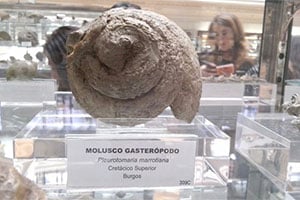 A gastropod is a mollusk that has a foot for crawling , a head with tentacles and a body that is usually protected by a shell . These animals can be aquatic or terrestrial.
A gastropod is a mollusk that has a foot for crawling , a head with tentacles and a body that is usually protected by a shell . These animals can be aquatic or terrestrial.
Gastropods, like all mollusks, have soft integuments and have bilateral symmetry. The ventral foot that allows its movements is fleshy and muscular. As for the head , it is cylindrical and clearly defined, exhibiting one or two pairs of sensory tentacles.
Most gastropods have a shell that is coiled in a spiral. However, in some species the shell is atrophied or reduced to a minimum.
Snails , for example, are gastropods. These creatures, protected by a spiral shell, can be terrestrial, freshwater or saltwater. To move, they contract the muscles of the bottom of their foot with waves.
Helix aspersa is the common garden snail , one of the best-known gastropods. It is a hermaphrodite species: each specimen has female and male reproductive organs, so that procreation can be carried out by any pair of these snails.
It is interesting to note that the common garden snail is consumed by humans in several Mediterranean regions, such as parts of Spain and France . As a gastronomic product, this gastropod is raised on farms through heliciculture .
Simultaneously, the snail is considered a pest that causes serious damage to crops. That is why we try to ensure that this gastropod is not present in the fields where agricultural activities are carried out.
It is known that the oldest gastropods were marine and their appearance took place throughout the last part of the Cambrian , during the Paleozoic Era, around 541 million years ago. The Scenella and the Helcionella , two forms of gastropod belonging to the Lower Cambrian, are no longer considered within this group, nor is the small, spiral-shaped Aldanella , which is not even included among mollusks.
 In the Ordovician , 485 million years ago, there was a wide variety of gastropods in more than one aquatic habitat . However, such ancient fossil remains are not in good enough condition for researchers to correctly identify them. This has not prevented them from describing species from the past, particularly from the Paleozoic; For example, we know fifteen different species belonging to the genus Poleumita , dating back 444 million years.
In the Ordovician , 485 million years ago, there was a wide variety of gastropods in more than one aquatic habitat . However, such ancient fossil remains are not in good enough condition for researchers to correctly identify them. This has not prevented them from describing species from the past, particularly from the Paleozoic; For example, we know fifteen different species belonging to the genus Poleumita , dating back 444 million years.
Currently, there are few groups of gastropods that have survived from such ancient times. Although those that belonged to the Carboniferous , 359 million years ago, have many characteristics in common with the current ones, almost none of them are directly related. Only in the Mesozoic era did evolution find the ancestors of the gastropods that we know today.
Returning to the Carboniferous for a moment, the Maturipupa , one of the oldest terrestrial gastropods discovered so far, belonged to that era. Snails have most of their ancestors from the Cretaceous period, within the Mesozoic era, 145 million years ago. It was then that the genre called Helix emerged, mentioned in a previous paragraph.
In Mesozoic rocks it is more common to find fossils of gastropods, and they have an acceptable state of conservation, both in freshwater and saltwater environments. Another curious fact is the many traces that can be seen in some sedimentary rocks, which are supposed to have been created by ancient gastropods when passing over sand and mud terrain. This statement is not supported by all scholars, but it is based on the immense resemblance of these footprints to those left by current gastropods.
